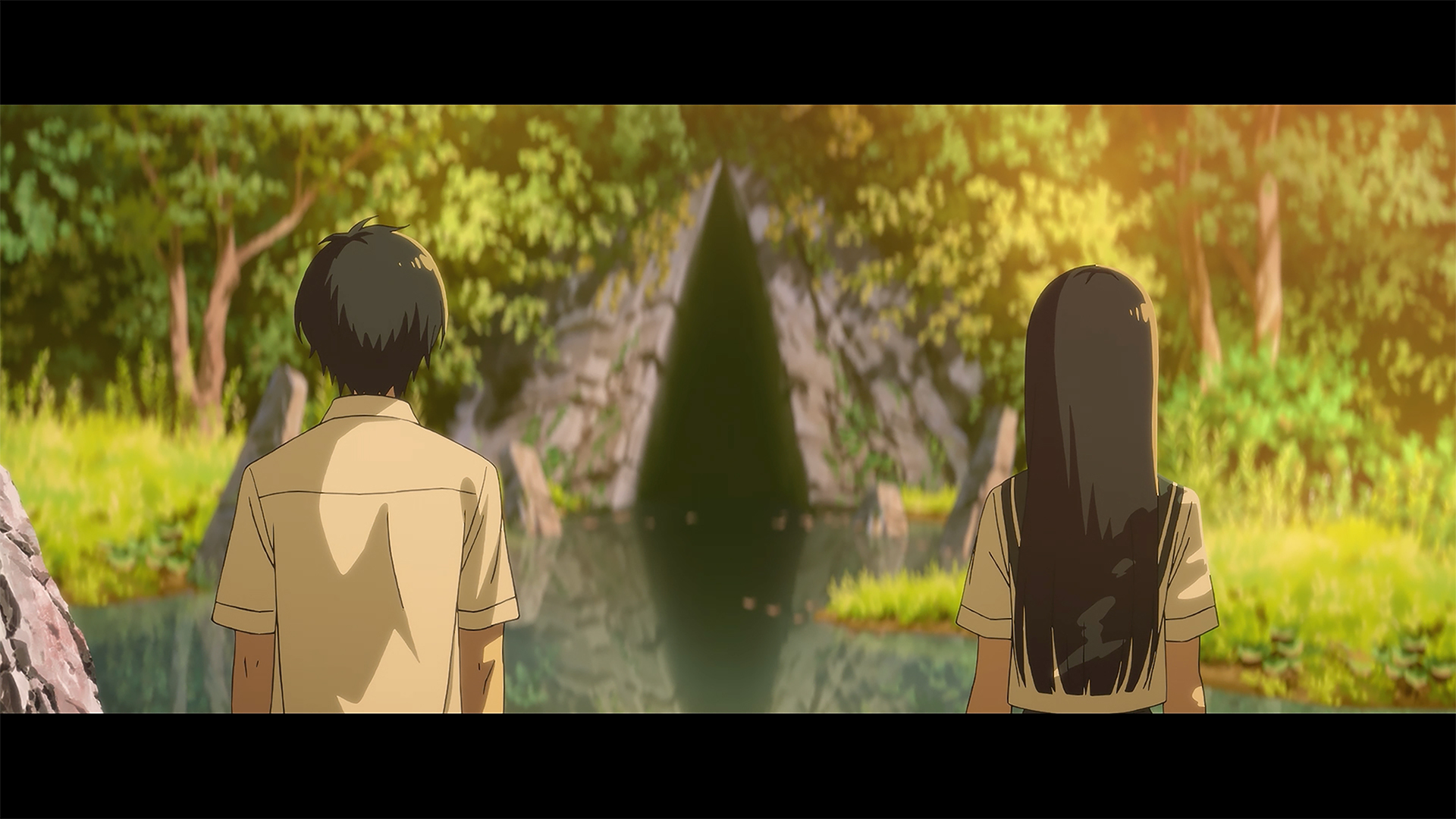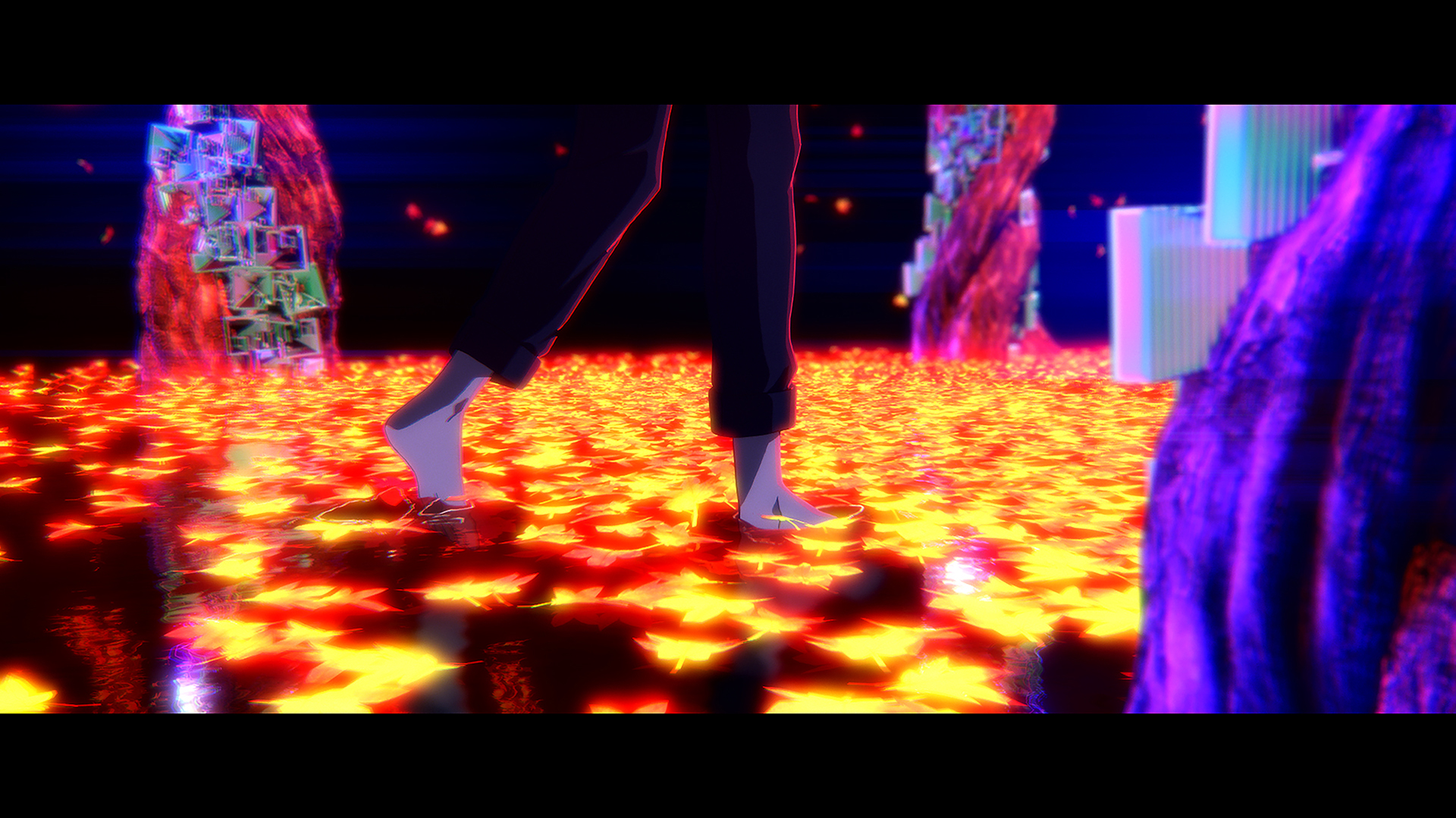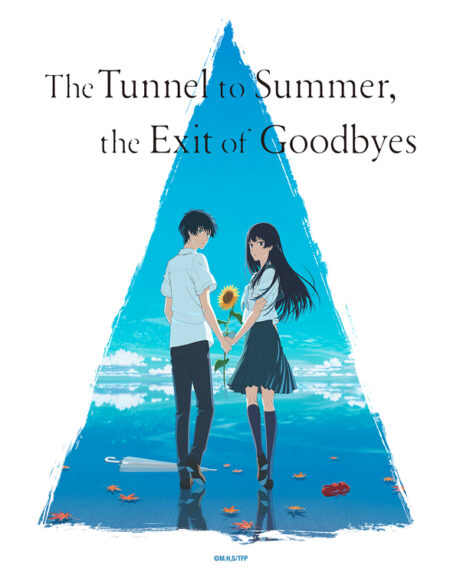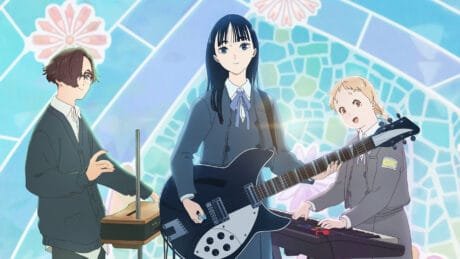Purrr....
- Believable relationship
- Themes
- A few standout visuals
- Diagetic opening vocal song
Hisss!
- Unemotional love story
- Sudden viewpoint shift in final part
Studio
Clap Animation StudioDirector
Tomohisa TaguchiGenre
Animation, Drama, FantasyRated
NATheatrical Release Date (NA)
Nov 3, 2023Film Length
1hr 23minPurchase From
What would you give up in order to grant your wish? That’s the question that The Tunnel to Summer, the Exit of Goodbye, the latest anime movie from relative newcomer CLAP animation studio, initially appears to ask. However, as hinted in the film’s rather awkward title, that’s not quite what this adaptation of an award-winning novel by Yamemei is really asking. Even so, it may or may not be worth it for the audience to give up their precious time to learn the answers from this solidly average film.
The Entrance

Credit: Courtesy HIDIVE / IFC Films
The movie centers on Kaoru Tono, a high school student in a city in the Japanese countryside. In this city, there are rumors of the Urashima Tunnel, a mystical passageway that grants you any wish but at a cost. Kaoru doesn’t pay much attention to this until two things happen. First, he meets and lends an umbrella to an antisocial young woman named Anzu Hanashiro. Second, he runs out of his house to get away from his angry, drunken father. As he wanders, he comes across a distinctive cave entrance and explores inside for a few minutes. In a dark tunnel lined with Japanese maple trees, he finds his previously deceased pet parakeet alive and well as well as the sandal of a lost loved one named Karen. Furthermore, when he returns home, he is shocked to learn that he had been gone for an entire week!
When he inevitably returns to the cave to explore further, he is surprised to discover that Anzu, who turned out to be a transfer student in his class, followed him inside. When he rushes her back outside and explains the bizarre occurrences associated with the cave, she proposes that they enter into a joint operation. Their mission: to study the Urashima Tunnel so that they can make their wishes come true. From there, the two slowly grow closer together as they test and delve further into the tunnel and learn about each other’s wishes.
Love. Actually…

Credit: Courtesy HIDIVE / IFC Films
Yes, it’s a love story, but it’s also a story about being stuck and eventually moving forward. Let’s take it a bit at a time. As a love story between two high school kids, it’s a decent depiction of first love. Kaoru and Anzu are both lonely souls who can understand the pain the other is going through, and it feels natural to see them open up to each other as they spend more time together. Unlike too many anime pairings, you actually believe that they would get together. They are a couple you want to root for no matter what happens. However, there’s a distinct lack of emotion when watching their highs and lows. When the plot inevitably separates them and in other moments that are supposed to be some of the biggest ones in the film, they fall flat. Actually, the only time any emotion sprung up while watching the movie was the anger I felt upon seeing the drunken dad abuse his son. Although we’re spending all this time with the two leads, we’re separated from them at the same time.
As mentioned earlier, Kaoru and Anzu are both high school students. Kauru’s friend at school remarks at one point that the two really spend a lot of time together, but we basically never see them interact together around their classmates or any other character of note. When Anzu is first introduced as a transfer student in class, the students are surprised to learn that she knows him already, and that’s it. She alone snubs the friendly students who want to befriend her and alone gets into a confrontation with the class bully. There is a montage set to music in the middle of the movie that includes a few scenes at school, but those scenes are incidental. Even outside of class, they only meet up with each other among a sea of nameless people. No friends, no nothing. As a result, we lack that in-universe view of them. What we do get, instead, is a concentrated focus on them and their past.
Two Steps Forward, One Step Back

Credit: Courtesy HIDIVE / IFC Films
As we learn over the course of the movie, every major character in this film is stuck emotionally in some way. Kaoru, as we find out, blames himself for the death of his little sister, Karen. That’s the wish he seeks from the tunnel: to bring her back so that he can be happy again. Similarly, would it honestly surprise anyone to know that Kaoru’s dad’s drunkenness and abuse appears to have its origins with his daughter’s death? As for Anzu, she’s an amateur mangaka who lacks the confidence to submit her work to a publisher for consideration due to self-doubt and extreme parental pressure. At the start of the movie, they have no apparent way forward, but that changes over the course of the movie. Not everyone can escape from their mental and physical torments alone; people need support sometimes. Even then, it can still take time.
The story is clever about weaving these ideas into the narrative in less obvious ways. Aside from the time-altering tunnel itself, the train station stop is another prominent location. Kaoru and Anzu meet for the first time there as they figuratively and literally both wait for their train to come in. Furthermore, the station loudspeaker regularly announces that the train is delayed as a result of a collision with a deer, a small detail that echoes the loss of forward movement shared by the characters.
However, even when the characters appear to move forward, it’s not presented in a fully satisfying way. The dad announces his plans for a better life while simultaneously forgetting to acknowledge the anniversary of his daughter’s death. When Anzu pursues her mangaka aspirations without Kaoru, there’s no indication that she dates anyone else. One could say she threw all her time and energy into her work, but even so, it’s still a long period of time. Even when they reunite, there are clear differences between them, so what should be a happy moment feels bittersweet.
The story is also clumsy when it comes to the sudden shift in perspective in the final part. Up to this point, Kaoru has been well established as the only viewpoint character in the narrative. We see pretty much all events that happen from his perspective. That includes everything involving Anzu, from the initial meeting and her classroom introduction to the tunnel experiments and visiting her at home. The audience never sees a scene of Anzu completely by herself until close to the end. Much of the tension is lost as a result, which hurts the flow of the film.
Sweet Reflections

Credit: Courtesy HIDIVE / IFC Films
Even if the script still needed some polish, the movie looked fine visually. The cave entrance of the Urashima Tunnel, triangular in its formation and sitting in a pool of reflective water, makes for some of the most striking shots in the film. In fact, all the most notable shots used reflection in some way. When Kaoru and Anzu attend a festival, the water in front of them mirrors the fireworks bursting in the night sky. It’s even used to great effect at the train station stop location. Normally, when the two are at the stop, the camera is placed behind the characters, showing us the spartan landscape that they see. In one scene when the mood is joyful, the camera spins around, showing us the front of the characters and the field of beautiful and vibrant sunflowers behind them. As for the other visuals, the inside of the Urashima tunnel is otherworldly in design but clearly computer generated. It does break the immersion in some ways, but at the same time, it also adds to the strangeness of the locale.
Unlike the visuals, the music only has one real standout moment in the entire film. In the beginning, as Kaoru starts to walk through town, he has his earbuds in and a music player in his hand. When he presses play, the movie’s opening vocal theme starts playing diegetically. It was a cool moment, even if the song itself wasn’t all that memorable. There are two more vocal songs across the length of the film, one for a montage in the middle, and one for the ending theme. Neither one was introduced in the same way as that opening song, though, which was a shame.
The Exit
Overall, The Tunnel to Summer, the Exit of Goodbye can be a decent viewing experience. It offers a believable if emotionally distant lead couple, some themes to mull over, and a handful of standout visuals. However, the big emotional moments, especially in the final act, may leave audiences unsatisfied. In short, the title is awkward and the movie imperfect, but move forward anyway.
The movie is available in both English dubbed and subtitled versions. An early access screening provided for this review.









